SUMMARY
This is AI generated summarization, which may have errors. For context, always refer to the full article.
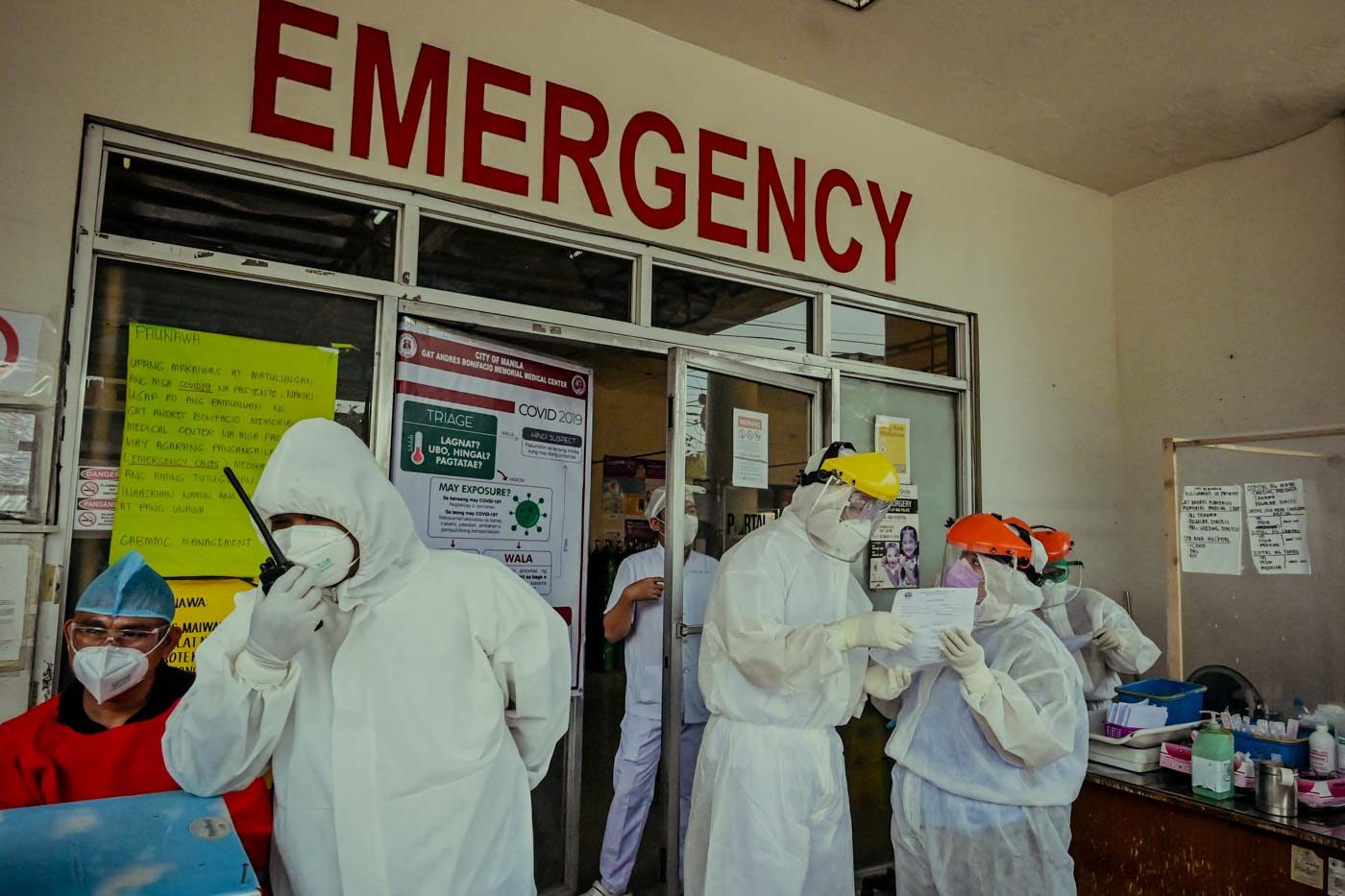
MANILA, Philippines – The Gat Andres Bonifacio Memorial Medical Center (GABMMC), dubbed as Manila’s “hospital for the poor,” is known for its dialysis center. When it began to accept COVID-19 cases, the doctors, nurses, and the rest of the hospital staff had to retrofit both their mindsets along with the hospital itself.
GABMMC admitted its first 3 COVID-19 positive patients in April – all long-time dialysis patients of the hospital. It also had a number of patients, categorized as probable COVID-19 cases, who were also seeking dialysis treatment.
Novel challenge
Manila assigns each district hospital for specific cases. The designated COVID-19 facility is the Sta Ana Hospital. This is to minimize the risk of infecting patients who are already suffering from different ailments.
Ideally, all those infected with COVID-19 should be sent to hospitals dedicated to treatment of the new disease. This is to reduce the risk of infecting patients already compromised by existing illness.
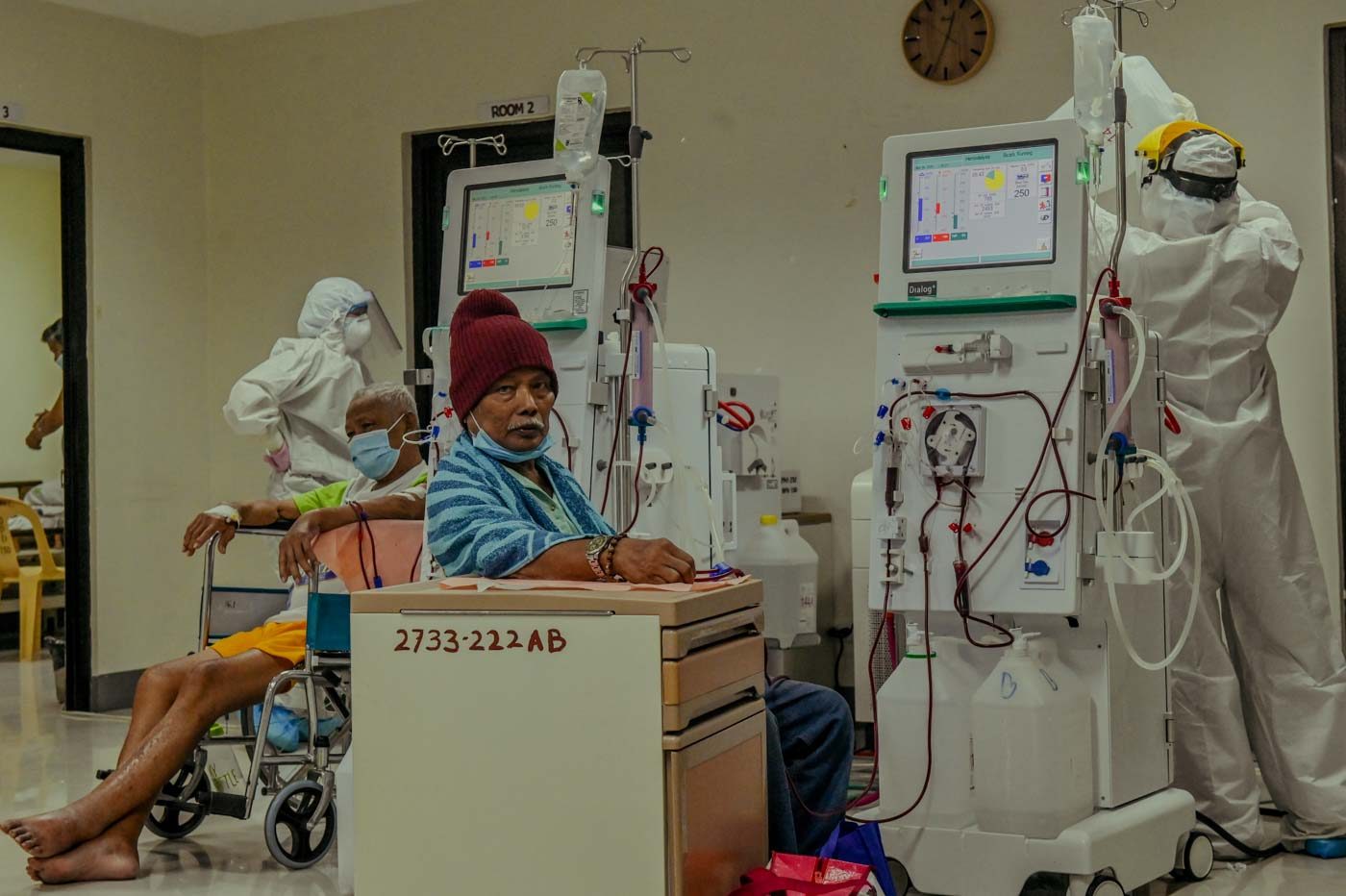
But with both government and private hospitals swamped with patients, GABMMC staff could no longer turn away COVID-positive patients. Since then, the medical facility has had to cope with the influx of both non-COVID-19, and possible COVID-19 cases.
Overflowing triage
The influx of patients seeking medical attention and the steady rise of COVID-19 cases forced GABMMC to retrofit its facilities. With its triage area already overflowing, and with more people lining up outside the hospital, waiting for as long as 5 days, GABMMC extended its emergency room (ER) to accommodate regular patients confined in COVID-19 tents.
“Due to the very strict screening at the triage, there are less patients accommodated inside the hospital. There is an overflow at the triage, so people are left outside on the ER ramp,” said head ER nurse Aizen Millar.

ER senior nurse Vanessa Salapong explained how helpless she felt due to the restrictions imposed for their safety. “Protocol is protocol. Thinking about it now, I’d rather prefer the chaos we had before the pandemic. Yes, the number of patients could be overwhelming, but we are able to treat all of them,” she said.
The foremost objective of the GABMMC staff is to avoid any accidental contact with unwitting COVID-positive patients coming in for non-coronavirus procedures. This would expose everyone else to the virus, and the hospital simply cannot afford to lose any of its staff.
Retrofitting for COVID-19
Despite the strict protocols and the overflowing triage, GABMMC staff coudn’t turn their backs on their patients. They allocated 3 tents outside the ER for COVID-19 cases: one tent for resuscitation, an isolation tent for probable patients, and a pediatrics tent so that the main triage could hold those who didn’t show symptoms.
Patients who showed symptoms and needed to be admitted were placed in the tents until their results arrived. This was to determine whether they should be transferred inside the building if they tested negative, or if they should be endorsed to the designated COVID-19 center if they tested otherwise.
It’s not a smooth ride from there. Swab results that should only take 2 to 3 days to process would reach 5 to 8 days. This delayed the turnover process which creates a problem since the hospital can only accommodate 6 probable patients in the tents at a time.
On April 15, the national government announced the start of “targeted testing.” Medical staff and patients were required to get swabbed. After almost two weeks of waiting, the results for GABMMC came. On April 28, the GABMMC temporarily closed its ER after 4 doctors, a medical technologist, two nurses, and a radiologic technologist tested positive for the coronavirus disease. For a week, the hospital ceased admitting new patients as it underwent retrofitting and disinfection.
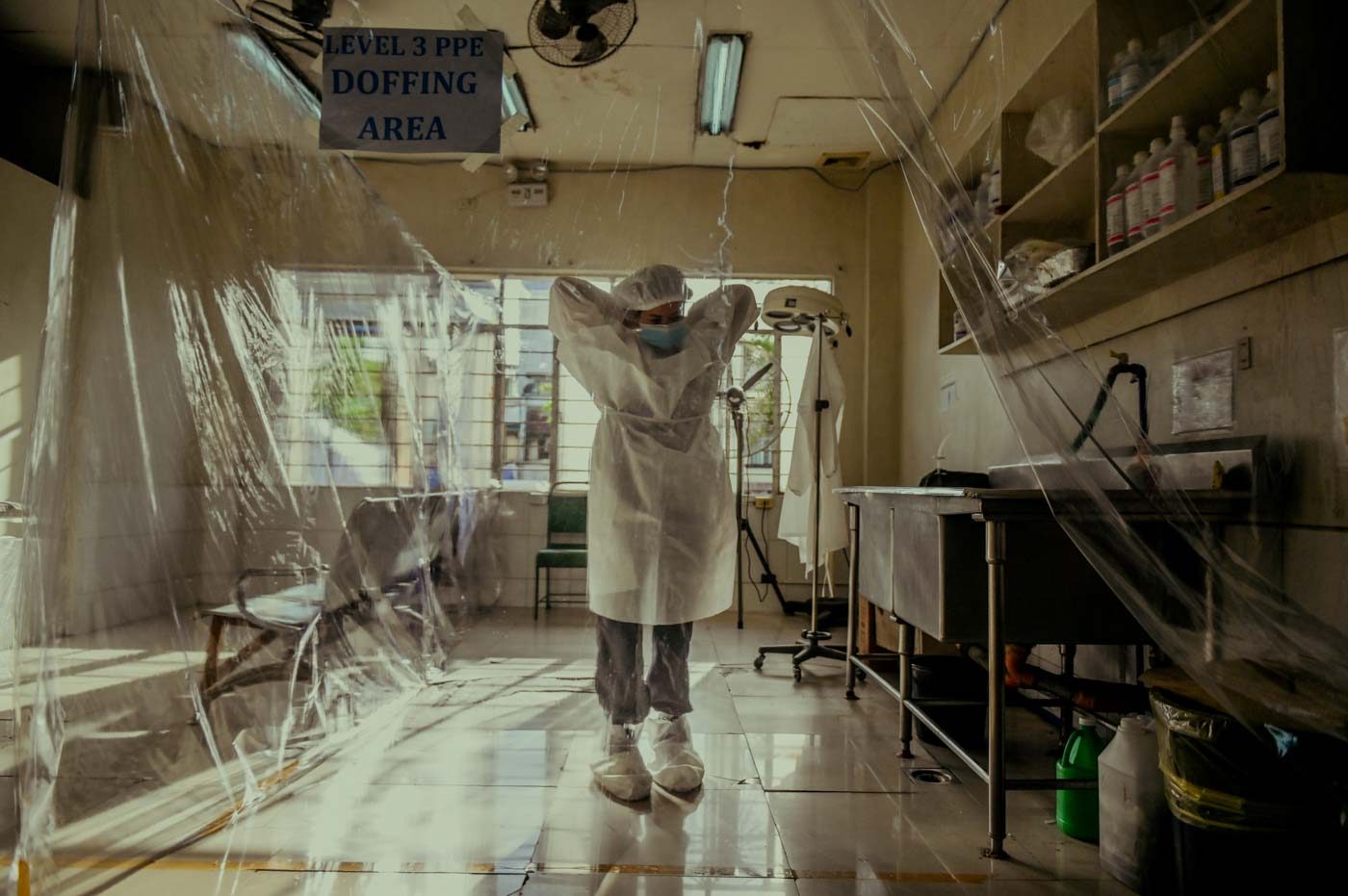
GABMMC used the temporary closure to modify the building’s main entrance as the new ER. The original ER became the ER extension, where stations were divided with plastic curtains.
When the patients under monitoring in the tents tested negative, they were moved to the ER extension first, before clearing them for admission inside the designated wards. Since they had been confined and exposed to other patients in the tents, this served as another level of protection for the hospital workers and other patients.
GABMMC also created a new ramp to go with the new ER. Every entrance of the hospital has a misting station and every floor was required to have designated donning and doffing areas for personal protective equipment (PPE).
The hospital also cleared a floor to house the staff members who opted to stay in the hospital. It also allotted rooms for the medical workers who are under monitoring, while awaiting their swab results.
During that time, the wards might have looked abandoned and even haunted, but for the medical staff, the moment of silence was bittersweet. They might have wanted to catch their breath and get ready for another wave cases, but all the time they remained restless, thinking of all the patients that they would have to turn away.
All they could do was to focus on their current patients, and prepare themselves once the hospital reopened its doors to new patients.
Patient’s woes
A patient everyone at the hospital called “Tatay” couldn’t believe that he had COVID-19. He was among the first 3 coronavirus patients of GABMMC. After finishing a phone call with his wife and daughter, he was in anguish and disbelief. “It’s impossible for me to have COVID. They’ve made a mistake. I don’t feel sick. I am strong.”
He is a long-term dialysis patient of the hospital, and was tested for COVID-19 when he expressed difficulty in breathing.
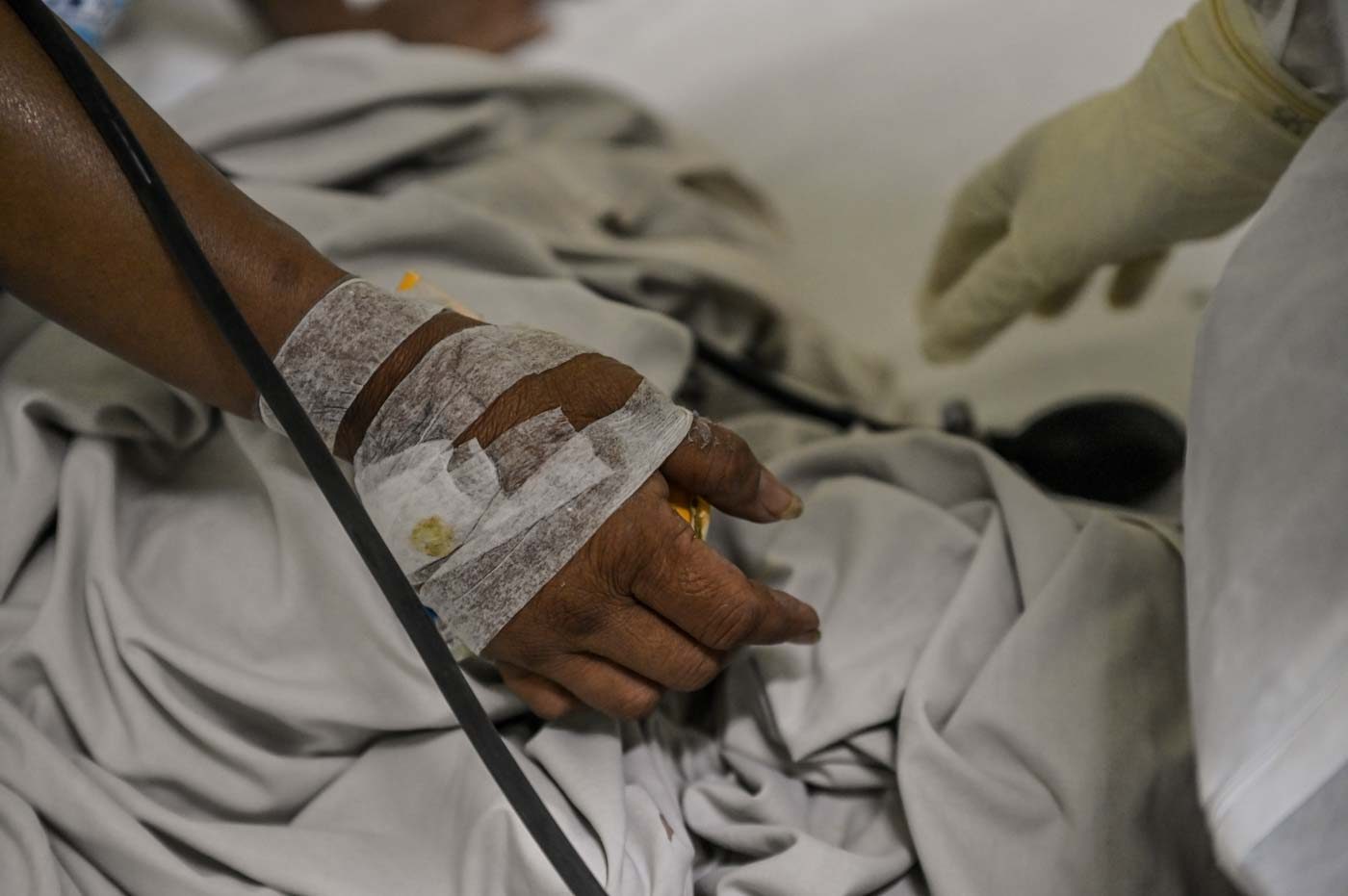
The hospital’s COVID-19 isolation room was supposed to be a dialysis ward – it was under construction before the pandemic. As a contingency measure, hospital administrators used it when they realized that they had no choice but to treat COVID-19 patients as well.
The day that the retrofitted isolation room was ready, Tatay, together with two other confirmed patients and two probable patients, each took a bed and began their coronavirus quarantine journey.
More than the diseases that ailed him, Tatay was worried about his family who were already being stigmatized. “It’s okay if it’s just me, but then my family has been dragged into this mess. Our neighbors are gossiping about us. My family doesn’t deserve this,” he said.
While Tatay was thankful that he was at GABMMC, he didn’t like the fact that he had to share his room with another COVID-19-positive patient. “Dapat isolated ako (I should be isolated),” he said, even as the nurse explained that because of the limited number of rooms, patients with the same diagnosis had to be grouped together.
Tatay’s fellow COVID-19 patient, Conrad (not his real name), was on a bed across from him.
Conrad, a mechanic with 3 children, looked at the bag filled with food and medicine and said: “Before I was confined in the hospital, I was being carried from the house to the rented tricycle. I saw the neighbors putting up a fence around my house so my family can’t leave.”
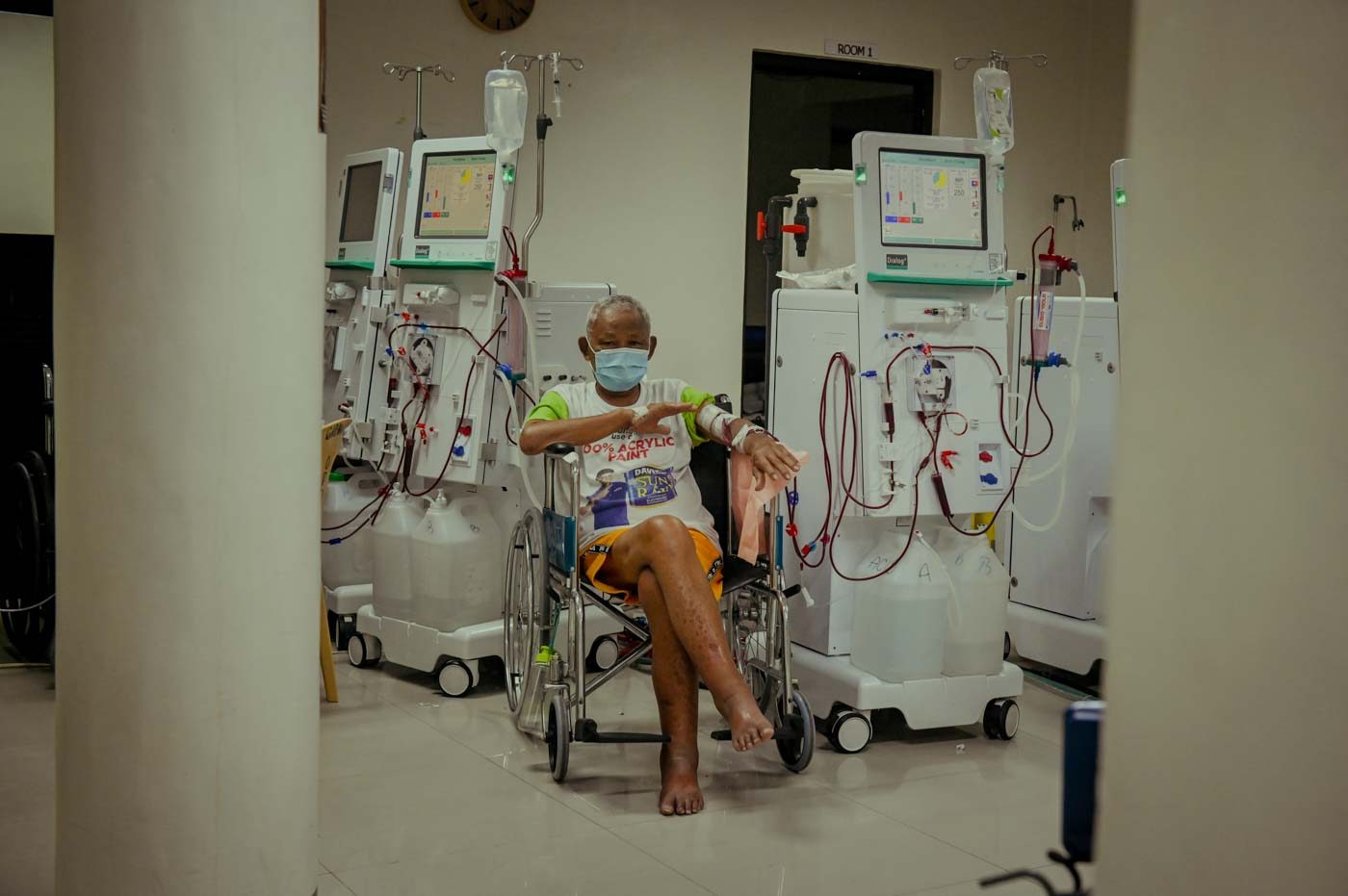
He teared up as he worried about his children. “It should be me. I should get sick rather than them. They’re good kids. I can survive this.”
Between the two, Tatay appeared to be stronger since he could walk and perform simple exercises in the room. Conrad, aided by a wheelchair, might not have the same physical strength as his younger roommate but he was in high spirits.
Conrad never failed to smile and thank medical workers attending to his needs. “Thank you, thank you very much for your service. Your service and profession is gravely important. Thank you so much,” he would tell them each time.
Outside the isolation ward, 3 tents were set up for patients who were probable COVID-19 cases. A nurse motioned to a patient and joked: “See that guy over there? He already lives here.” A slender man in his thirties sat on a wheelchair by the entrance of the isolation tent.
Alexander had been in and out of GABMMC for years due to his chronic pneumonia. There were times when he would be confined for over a month. Despite his unfavorable situation in the tent, he found comfort in being accommodated by the staff.
“They feed me, they check up on me, they give me medicine. I like it here. I’ll go home whenever I feel strong enough to go home,” he said, while watching the busy facade of the hospital through the small opening of the tent.“
“They treat me well here unlike at home, where I feel like I am seen as a burden,” he added, as his gaze lowered to the ground. Alexander’s family had yet to visit him but he would just shrug it off.
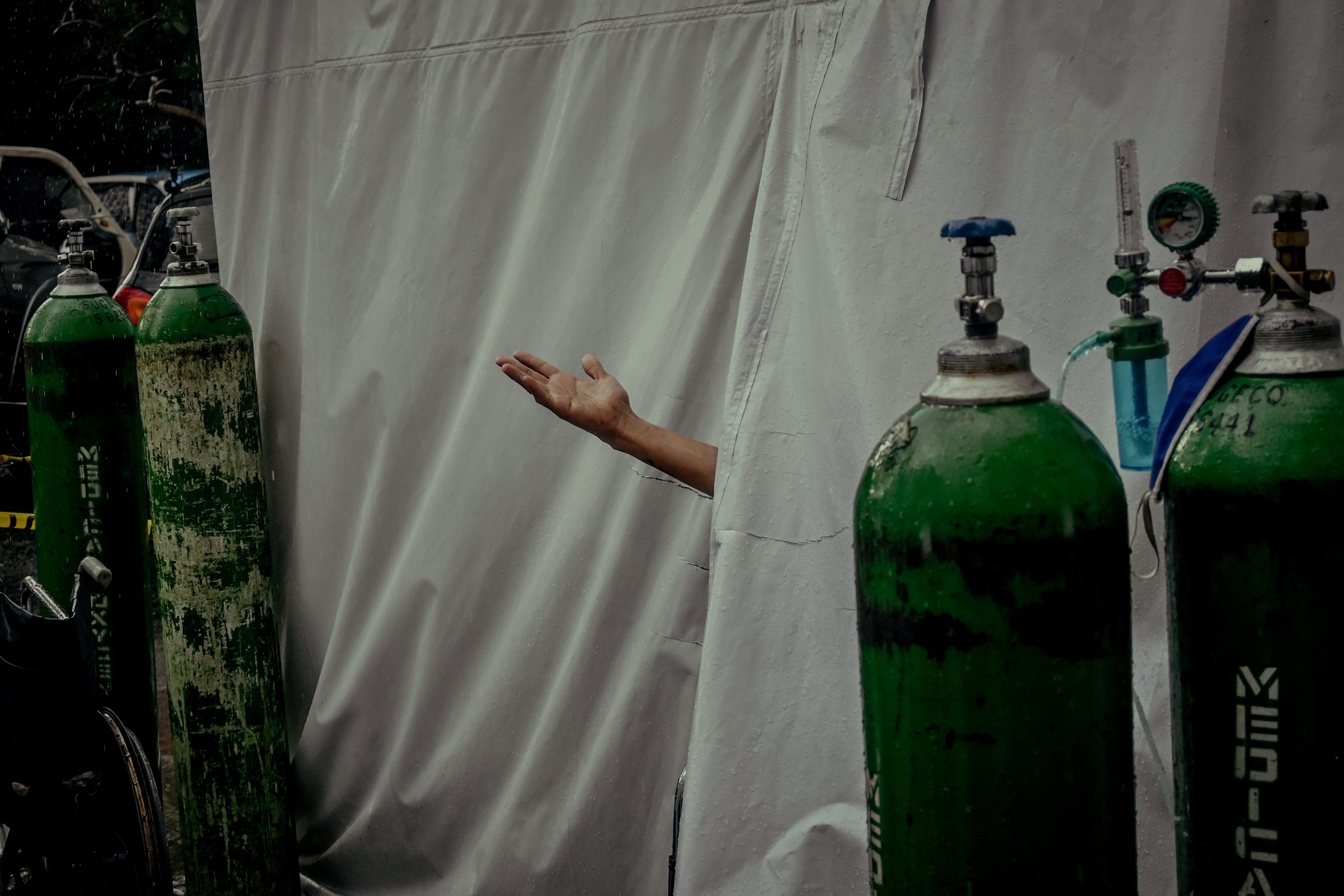
Sitting at the far end of the tent, Sarah (not her real name), was at the GABMMC because her mother was undergoing dialysis, and had been classified as a probable case. Her mother showed symptoms of pneumonia and had a high fever. Because of the strict screening protocols, this deterred her mother from getting the dialysis treatment.
Sarah fanned her mother with a piece of cardboard while her eyes were fixed at the entrance to the tent.
Visitors and caretakers were not allowed to enter the tent, but leaving her mother was not an option. The rule riled her. “They say caretakers aren’t allowed here? Who will look after the patients when they’re too busy treating someone else? Sure, if someone can sit here in my place, I will leave.”
Sarah explained that she understood the gravity of the outbreak, and knew that healthcare workers were doing their best, but she cried as she wished out loud that they too, should not be forgotten.
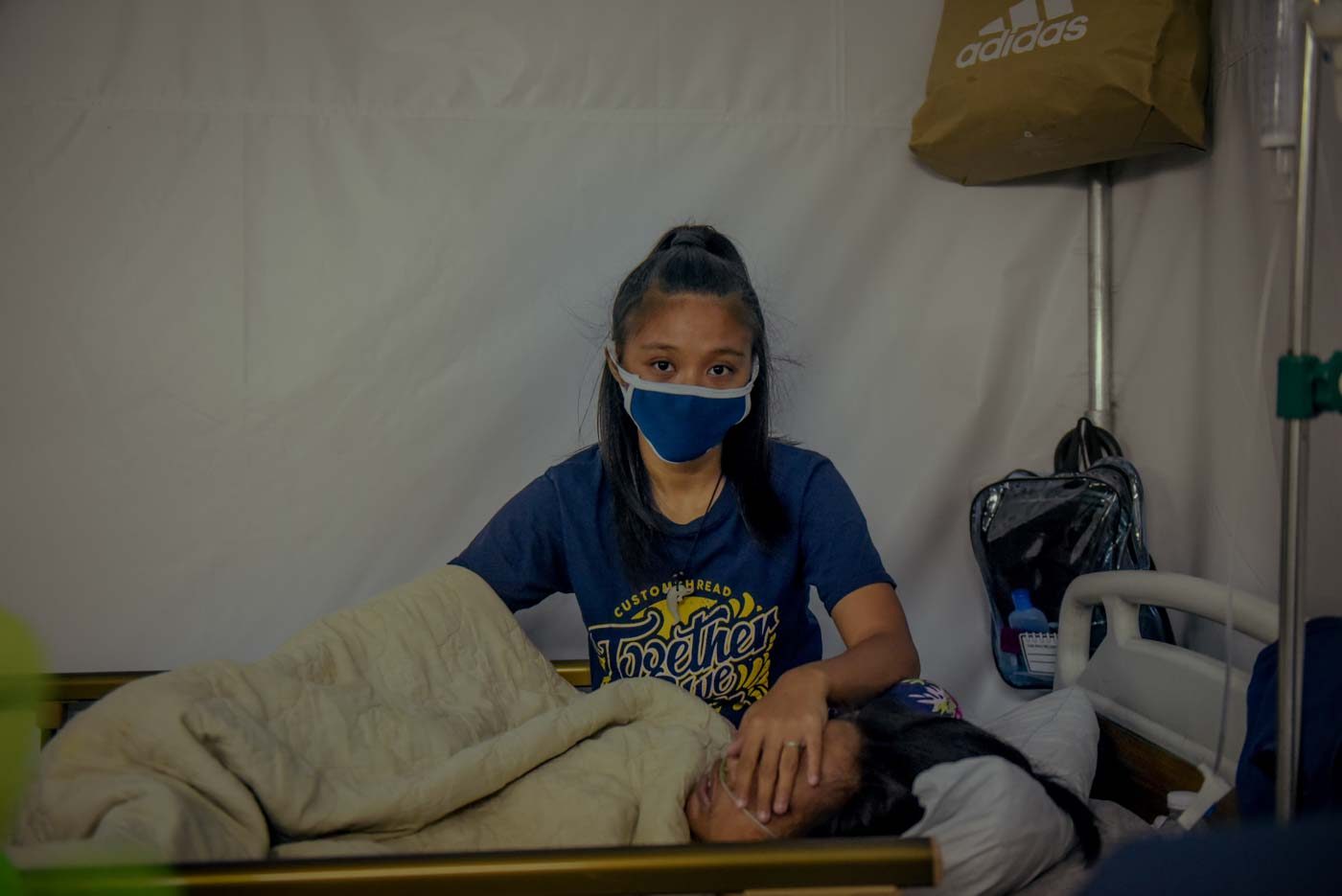
It’s never easy getting sick, more so during a health crisis. The lucky few who were accommodated by the hospital said that they were well taken care of, but were not as fortunate. They cried helplessly outside the closed doors of the hospital, with no one to blame but the pandemic.
Everyone in the hospital was on their toes. For the medical staff, the metaphoric war as all too real for them, but they still put on their suits everyday and served as best they can.
What the future holds
All things considered, GABMMC was still lucky. The medical facility got full support from Manila City Hall. Salaries and staff benefits were not a problem. Donations continued to come in, as well as a steady supply of PPEs and other essential items.
As of June 19, the City of Manila had 1,936 confirmed cases. Tondo District 1, where GABMMC is located, topped the list with 306 active cases.

On May 28, the hospital opened its 6th floor as a COVID-19 ward to accommodate the influx of patients. GABMMC is currently admitting 29 COVID-19 patients, and housing 5 of their medical staff who tested positive. The retrofitted isolation room became the quarantine room for their health workers.
Dr Fresco Yependon or Dr Yappy, a resident doctor for infectious diseases, said that the hospital – or for that matter the whole health sector – faces great difficulties in managing the pandemic, but with perseverance and resilience, overcoming the odds is not impossible.
“Every day is a learning day. The administrators meet almost daily to address the problem; protocols from the DOH changes as well. We need to adapt. Adapting constantly means providing better service to our patients, while securing the safety of our staff,” Yependon said.
As Metro Manila modified its lockdown and eased into general community quarantine, GABMMC continued to serve the people. The virus may have already breached this medical stronghold, but the people there remained steadfast in their commitment to keep fighting it.
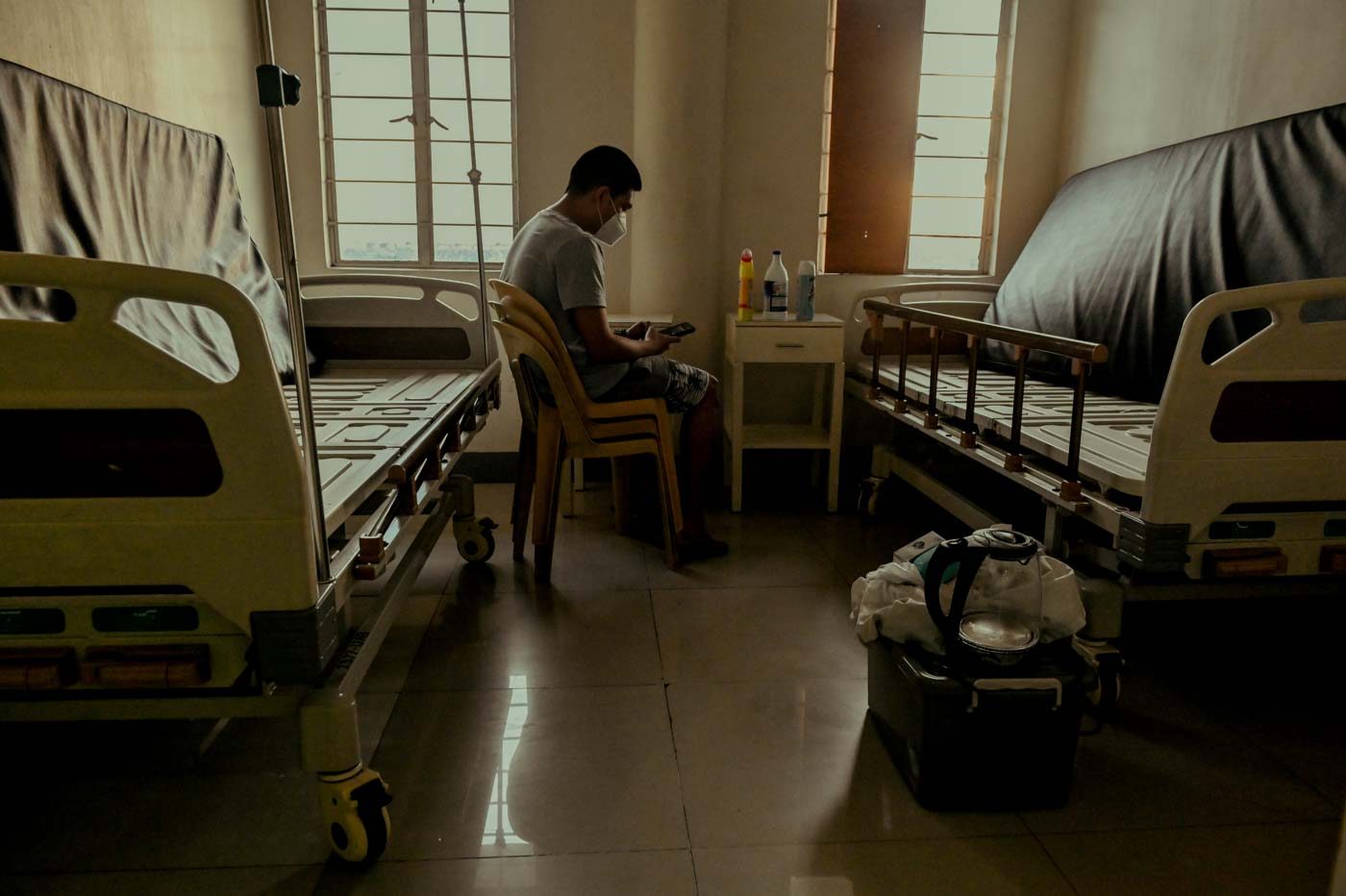
– Rappler.com
Add a comment
How does this make you feel?
There are no comments yet. Add your comment to start the conversation.